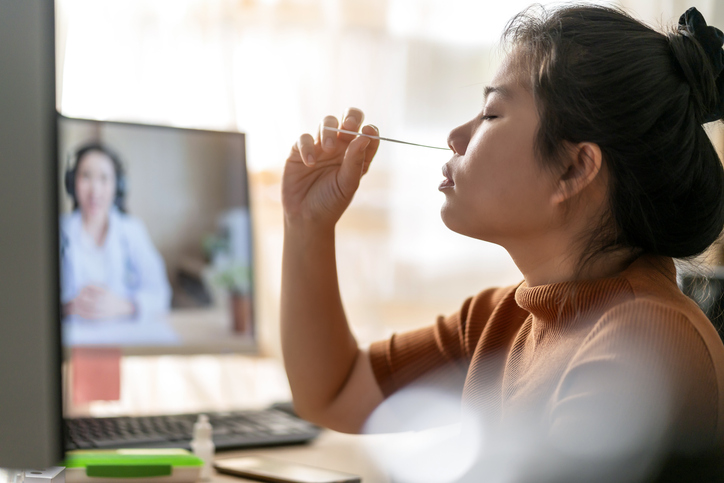The coronavirus pandemic has lasted years now, so countries, states, and corporations are starting to develop plans to “live with COVID-19.†California is loosening indoor mask restrictions for vaccinated people, and the U.K. plans to end some COVID-19 legal restrictions within the next month.Â
For some places, “living with COVID†may focus on getting everyone vaccinated. For others, testing may continue to have an essential role in reducing the spread of COVID-19.Â
However, testing programs need to be cost-effective and efficient if they are used in the long term. This is why RMI developed video-guided testing, where an RMI proctor remotely oversees COVID-19 testing through a video conference. This product is currently offered in the US only.Â
Doing COVID-19 testing remotely is cost-effective and efficient because no medical providers need to be on-site, and multiple people can test at once from any location.Â
But remotely observing testing can have logistical challenges. Here are some challenges that RMI overcame when rolling out video-guided testing to a new client:Â
Technology
Video-guided COVID-19 testing relies on workers calling into a video conference via phone or computer. While video conferencing is pretty standard in some workforces, industries such as construction or heavy industry don’t always have a smartphone or computer as standard-issue equipment for all employees.Â
A webcam is vital to conducting video-guided testing, so RMI worked with the client to ensure that employees had access to smartphones or laptops with webcams.
Privacy
Employees still have the right to privacy when being tested for coronavirus. The testing process must comply with HIPAA privacy regulations.Â
RMI was careful to maintain privacy for all testing participants when developing this product. Even if multiple workers get tested simultaneously, they cannot see one another on the video conference. Workers’ audio is also muted so that privacy is maintained.Â
Our proctor leading the testing can see everyone, but no one else can.Â
Quality Control
One of the main benefits of having RMI staff lead testing programs is that they confirm tests are done correctly.Â
Our proctors also watch employees to verify that they collect the specimen properly. They also ensure that an image of the test result is uploaded to the portal correctly so that accurate results can be reported.Â
RMI changed our process while developing this product to maintain quality control. For example, we asked workers to date their test kits when they took the test. The date written on the test confirms that old results are not accidentally uploaded on a different day.Â
How Video-Guided Testing Increases Testing Capacity
RMI’s videoconference COVID-19 testing enables one proctor to oversee a large number of tests while maintaining privacy and quality control.Â
Using this approach, we estimate that one proctor could conduct 20-30 tests per hour. This is a significant increase over one-on-one testing. Because this approach is remote, these tests can also be spread across multiple locations or companies.
If you’re interested in video-guided COVID-19 testing, please contact us.Â


